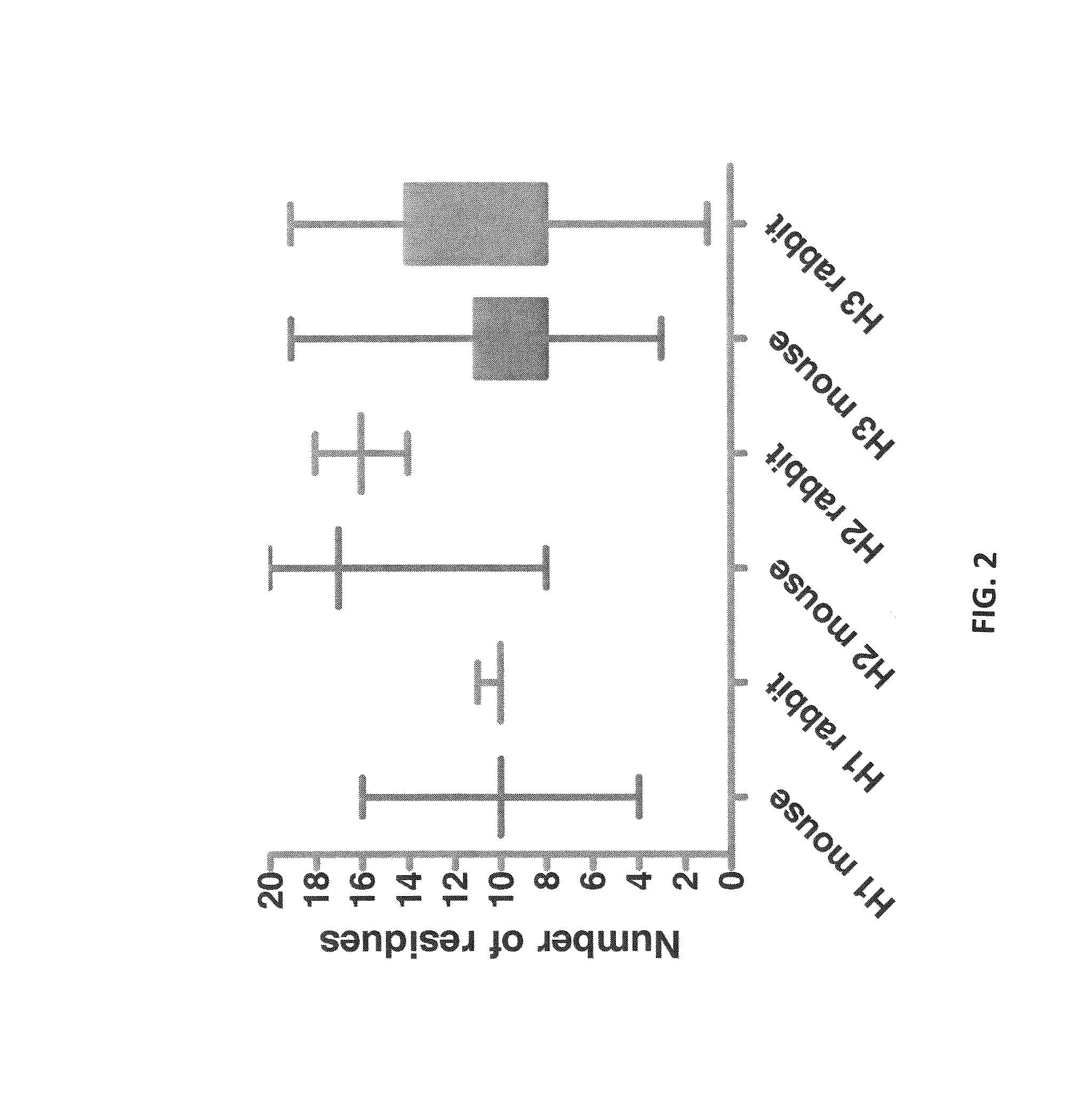Acceptor framework for CDR grafting
a technology of acceptor framework and cdr, which is applied in the field of acceptor framework for cdr grafting, can solve the problems of not widely spread, good binding capacity, and inapplicability of conventional hybridoma technology to generate monoclonal antibodies for rabbit antibodies, and achieves superior biophysical properties, good binders, and superior functional properties such as solubility and stability.
- Summary
- Abstract
- Description
- Claims
- Application Information
AI Technical Summary
Benefits of technology
Problems solved by technology
Method used
Image
Examples
Embodiment Construction
Definitions
[0014]In order that the present invention may be more readily understood, certain terms will be defined as follows. Additional definitions are set forth throughout the detailed description.
[0015]The term “antibody” refers to whole antibodies and any antigen binding fragment. The term “antigen binding polypeptide” and “immunobinder” are used simultaneously herein. An “antibody” refers to a protein, optionally glycosylated, comprising at least two heavy (H) chains and two light (L) chains inter-connected by disulfide bonds, or an antigen binding portion thereof. Each heavy chain is comprised of a heavy chain variable region (abbreviated herein as VH) and a heavy chain constant region. The heavy chain constant region is comprised of three domains, CH1, CH2 and CH3. Each light chain is comprised of a light chain variable region (abbreviated herein as VL) and a light chain constant region. The light chain constant region is comprised of one domain, CL. The VH and VL regions ca...
PUM
| Property | Measurement | Unit |
|---|---|---|
| Fraction | aaaaa | aaaaa |
| Light | aaaaa | aaaaa |
Abstract
Description
Claims
Application Information
 Login to View More
Login to View More - R&D
- Intellectual Property
- Life Sciences
- Materials
- Tech Scout
- Unparalleled Data Quality
- Higher Quality Content
- 60% Fewer Hallucinations
Browse by: Latest US Patents, China's latest patents, Technical Efficacy Thesaurus, Application Domain, Technology Topic, Popular Technical Reports.
© 2025 PatSnap. All rights reserved.Legal|Privacy policy|Modern Slavery Act Transparency Statement|Sitemap|About US| Contact US: help@patsnap.com


